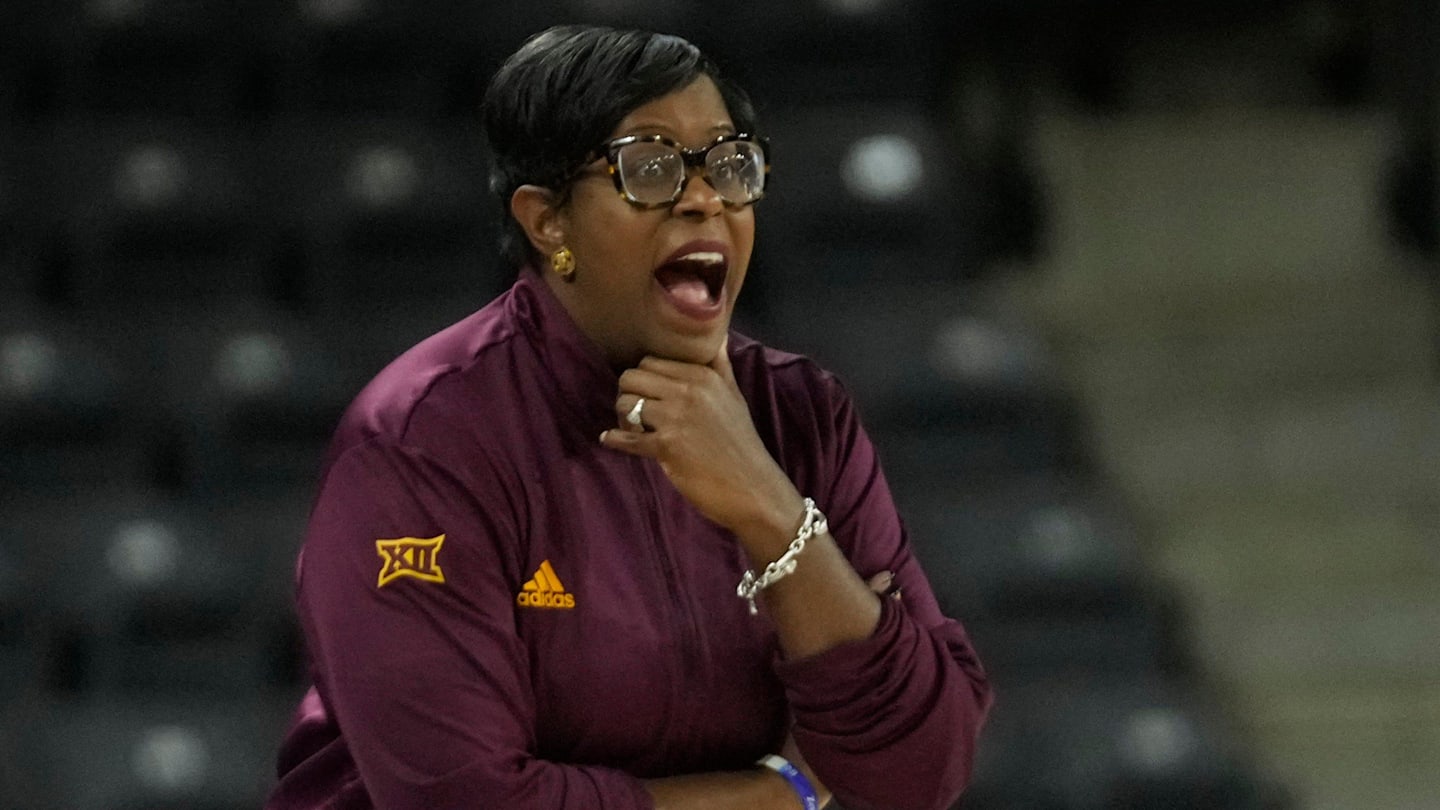Anchorage School Board makes broad cuts to staff, programs and sports in next year’s budget
The Anchorage School Board on Tuesday approved a budget for the coming school year that makes broad cuts to staff, programs and sports, while promising to restore them if the Alaska Legislature significantly increases state funding.
In a 6-1 vote Tuesday night, the board slashed funding for the 2025-26 school year by about $43 million. The cuts include more than 380 teacher, staff and administrative positions, ending the IGNITE program for gifted elementary students and eliminating all middle school sports and high school hockey, gymnastics and swimming and diving. Additionally, class sizes are set to increase by four across all grades, and some elementary schools will see their singular nurse and librarian positions reduced to half time.
The cuts are “beyond deep,” school board member Dora Wilson said. “This budget truly is removing limbs.”
Before approving the budget, board members unanimously voted to include an amendment that commits the district to reversing most cuts if the Alaska Legislature increases the Base Student Allocation in state statute by a minimum of $1,000 before May 15, the district’s deadline for issuing layoff notices.
Anchorage School District leaders have been wrestling with an $111 million structural shortfall that they say is caused by nearly a decade of largely flat state formula funding, along with rising costs and inflation. On top of the massive cuts, the district is relying on essentially all its reserves, about $50 million, to balance the budget.
District administrators say they are making cuts to primarily unfilled teacher and staff positions and will largely avoid layoffs.
Under the amendment from school board members Kelly Lessens and Carl Jacobs, the district would reverse the cuts to student instruction and support, including the IGNITE program, special education school staff, language immersion teachers, librarians, nurses and middle and high school sports.
An increase in the state’s per-student formula of $1,000 would generate about $71.1 million for the district, Lessens and Jacobs said.
The district would retain cuts to about 42 administrative positions and some other areas of the budget – but it would reduce class sizes to the same sizes it had in 2016, rather than just reversing the four-student class size increase. And it would use about $4 million for “high dose reading and math tutoring” for students in grades four through 12 who test below proficiency.
Lessens said the amendment “signals our clear-eyed intent to align every dollar we possibly can with our remarkable students’ needs.”
The district would still be spending down its funds to the lowest level possible, she said.
“This is a Hail Mary if I’ve ever seen one,” Lessens said. “But again, it’s the right thing to do.”
In Juneau, a contentious debate over education policy and funding is continuing to unfold. A measure in the Alaska House would add $1,000 to the per-student allocation for the 2025-26 school year, and by another $404 in each of the following two school years – but Gov. Mike Dunleavy has opposed the bill.
Dunleavy and some GOP legislators say they want funding increases attached to policy changes, such as directing more funding to home-schooled students and expanding charter schools. The state is also facing a budget deficit of about $500 million over two fiscal years.
School district leaders say it’s largely unclear just how much of a funding boost public schools can expect – and when the Legislature and governor might reach an agreement.
Board President Andy Holleman said the timing puts the district in a bind, because the board is required to pass a balanced budget now while the legislative session is ongoing.
“Every bit of this disruption is harmful,” he said.
Alaska Rep. Julie Coulombe, R-Anchorage, was in the audience on Tuesday night and said she flew in from Juneau to attend.
Coulombe said she would likely support a “decent” Base Student Allocation with policy changes, and that the school board’s amendment directing a state funding increase directly into classrooms “helps.”
“One of the things I really wanted was a commitment to where the money was going to go,” she said.
The school board took no public testimony during Tuesday’s special meeting, but last week members heard an outpouring of testimony from students, parents, educators and community members who implored the board to save various programs, sports and staff positions.
Many had expressed concern about how the cuts of about 295 teaching positions in the district could be a fatal blow to some language immersion programs at elementary schools.
On Tuesday night, many parents, teachers and students from O’Malley Elementary again attended, all wearing the school’s bright green color, to advocate for its French language immersion program. After the vote, parents said they fear the future of the entire school is at stake. Many of the students live outside of the neighborhood school zone and go to O’Malley for the immersion program. Without that, those students wouldn’t attend the school at all, they said.
“To us, it’s vital. It’s not a luxury,” said Zieh Fink, parent of a fourth-grader at O’Malley.
Board member Dave Donley made several attempts to amend the budget with about $5.4 million in cuts and direct the savings to restore other cuts, like language immersion teachers. He also attempted to save IGNITE and to lessen the increase in pupil-to-teacher ratios.
“I think it’s just catastrophic to increase class sizes by that much,” Donley said.
However, other school board members voted down his proposals – though they broadly agreed that the programs should be saved and class sizes should be reduced.
To pay for the programs, Donley proposed cutting the district’s middle school model planning period, and defunding the district’s Department of Diversity, Equity, Inclusion and Community Engagement, but keeping sign language interpreter staff and a volunteer coordinator position, among his other attempted budget trims.
Other board members said the middle school model planning period is critical to teachers’ ability to collaborate and support students and families, and critical to the success of students. Removing it would upend how middle schools function if the state doesn’t end up increasing school funding, they said.
Member Dora Wilson said that to take away the middle school model, in addition to the staff cuts already in the budget, “would be absolutely devastating to our middle schools.”
Several members also said they didn’t want to pick one program over another, and that they would rather move ahead with the administration’s proposed budget, and return to the conversation once they get a final revenue number from Juneau.
And with the resolution from Lessens and Jacobs, the district is already poised to reverse the cuts and class size increases when the Legislature increases funding, members argued.
“We can’t cannibalize our all of our programs” to get a few dollars, school board member Margo Bellamy said.
Donley said his proposed cuts likewise could have been reversed once an increase in state funding came through, he said. He was the only member to vote against the budget’s passage.
“I fully acknowledge that this is a terrible situation we’re in, trying to balance the budget at this point in time, not knowing what we’re going to get for additional state revenue,” Donley said. “But I really felt that class size, immersion, IGNITE – these were all things that should have been within this active budget and not on the list of things to fund if you got more money.”
Related
Sports Medicine Report: Sporting heads east to take on D.C.…
Sports Medicine Report is SportingKC.com’s look at the latest health update around the team ahead of upcoming matches and is pre
😔 João Palhinha’s Bayern Munich nightmare continues
João Palhinha's 2024/25 season has been marred by injury and the Portuguese midfielder had another setback against Bochum.Palhinha was sent off in the 43rd min
Which baseball player could excel at another sport? MLB player…
MLB.com and its beat writers surveyed over 100 players asking them which MLB player would excel at another sport and two Cincinnati Reds players ranked in the T
Raiders had no interest in Aaron Rodgers
When tracking down the details of the Raiders’ latest contract with Maxx Crosby on Thursday, I had a question for our sou











